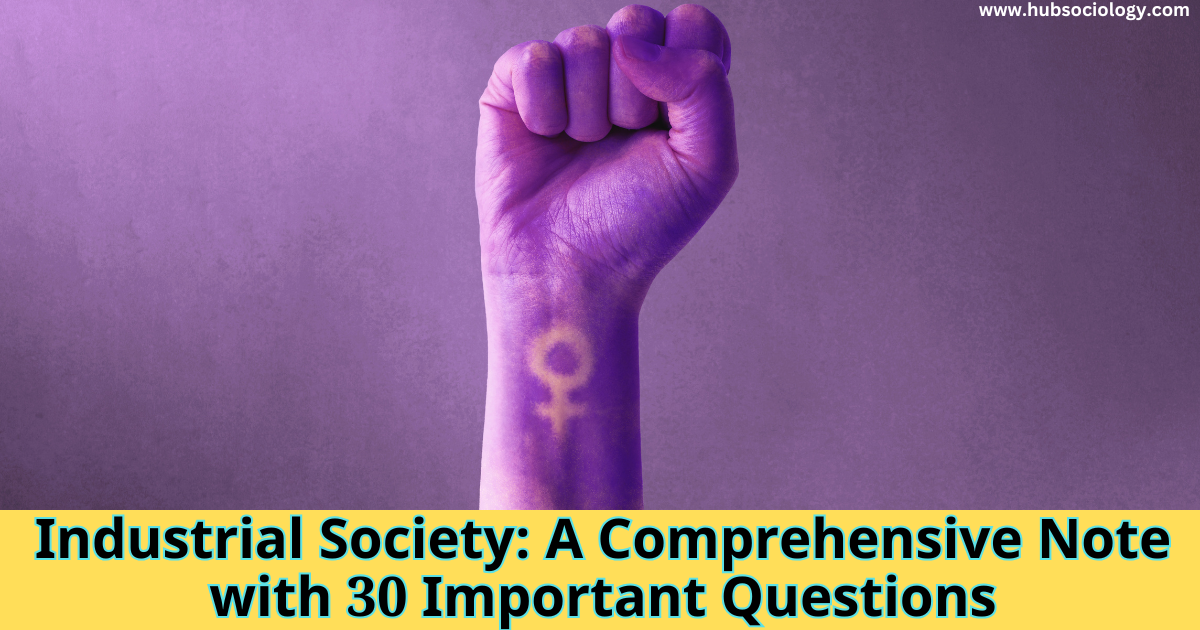Social change is a complex and multifaceted phenomenon that encompasses shifts in cultural norms, social structures, economic systems, and political institutions. In the context of Indian society, which is characterized by its vast diversity, deep-rooted traditions, and dynamic history, understanding social change requires nuanced methodologies. One such approach is the cognitive historical method, which examines how collective mental frameworks, beliefs, and perceptions shape and are shaped by historical processes. This article explores the cognitive historical approach to studying social change in Indian society, highlighting its relevance, key concepts, and applications.

Understanding Cognitive Historical Approaches
Cognitive historical approaches are rooted in the intersection of history, sociology, and cognitive science. They focus on the role of human cognition—how people think, perceive, and interpret their world—in driving and responding to social change. This approach emphasizes the importance of mental frameworks, such as ideologies, cultural narratives, and collective memories, in shaping societal transformations.
In the Indian context, cognitive historical approaches are particularly valuable because of the country’s rich cultural and intellectual heritage. Indian society has been shaped by a multitude of religious, philosophical, and cultural traditions, each contributing to a unique cognitive landscape. By analyzing how these cognitive frameworks have evolved over time, scholars can gain insights into the processes of social change.

Key Concepts in Cognitive Historical Approaches
- Collective Memory and Social Change: Collective memory refers to how groups remember and interpret past events. In India, collective memory plays a crucial role in shaping social identities and movements. For example, the memory of colonial rule and the struggle for independence continues to influence contemporary political and social discourse. Cognitive historical approaches examine how these memories are constructed, transmitted, and reinterpreted over time, and how they contribute to social change.
- Cultural Narratives and Ideologies: Cultural narratives and ideologies are shared stories and belief systems that shape how individuals and groups understand their world. In India, narratives rooted in Hinduism, Buddhism, Islam, and other traditions have profoundly influenced social norms and practices. Cognitive historical approaches analyze how these narratives evolve and interact with changing social realities, leading to shifts in values and behaviors.
- Cognitive Frameworks and Institutional Change: Cognitive frameworks are mental models that guide how individuals and institutions perceive and respond to challenges. In India, cognitive frameworks have played a key role in shaping institutions such as the caste system, family structures, and governance. By studying how these frameworks adapt to new circumstances, cognitive historical approaches shed light on the mechanisms of institutional change.
- Perception and Agency: Perception refers to how individuals and groups interpret their social environment, while agency refers to their capacity to act and bring about change. Cognitive historical approaches emphasize the interplay between perception and agency in driving social change. For example, the perception of social inequality and the agency of marginalized groups have been central to movements for social justice in India.
Applications of Cognitive Historical Approaches in Indian Society
- Caste and Social Hierarchy: The caste system is one of the most enduring and complex social structures in India. Cognitive historical approaches can help unravel how caste-based identities and hierarchies have been maintained and challenged over time. For instance, the Bhakti and Sufi movements, which emphasized devotion and equality, challenged traditional caste norms by promoting alternative cognitive frameworks. Similarly, the Dalit movement in the 20th century sought to redefine caste identities and assert the agency of marginalized groups.
- Religious and Cultural Syncretism: India’s history is marked by the coexistence and interaction of diverse religious and cultural traditions. Cognitive historical approaches can illuminate how these interactions have led to syncretism—the blending of different traditions—and how this has contributed to social change. For example, the Mughal era saw the fusion of Persian and Indian cultural elements, leading to new forms of art, architecture, and governance. Similarly, the spread of Buddhism and its integration with local traditions in ancient India exemplifies the role of cognitive frameworks in shaping cultural evolution.
- Colonialism and Modernity: The colonial period was a watershed moment in Indian history, bringing profound social, economic, and political changes. Cognitive historical approaches can analyze how Indian society grappled with the cognitive dissonance caused by colonialism and how it adapted to new ideas of modernity. The Indian Renaissance, led by figures like Raja Ram Mohan Roy and Swami Vivekananda, sought to reconcile traditional Indian values with modern rationalism, leading to significant social reforms.
- Nationalism and Identity Formation: The Indian independence movement was not just a political struggle but also a cognitive revolution that redefined Indian identity. Cognitive historical approaches can explore how nationalist leaders like Mahatma Gandhi and Jawaharlal Nehru constructed narratives of unity and resistance, mobilizing diverse groups under a common cause. The concept of “Bharat Mata” (Mother India) and the use of symbols like the charkha (spinning wheel) exemplify how cognitive frameworks were employed to foster a collective sense of identity and purpose.
- Globalization and Contemporary Change: In the post-independence era, India has undergone rapid social and economic transformations due to globalization. Cognitive historical approaches can examine how traditional cognitive frameworks are adapting to global influences, leading to changes in family structures, gender roles, and economic practices. For example, the rise of the IT industry and the spread of digital technologies have created new cognitive landscapes, influencing how Indians perceive work, education, and social relationships.

Challenges and Limitations
While cognitive historical approaches offer valuable insights, they also face certain challenges. One limitation is the difficulty of accessing and interpreting historical cognitive frameworks, especially in a society as diverse and complex as India. Additionally, cognitive approaches often rely on qualitative data, which can be subjective and open to multiple interpretations. Scholars must therefore exercise caution and rigor in their analyses to avoid oversimplification or bias.
Conclusion
Cognitive historical approaches provide a powerful lens for understanding social change in Indian society. By focusing on collective memory, cultural narratives, cognitive frameworks, and the interplay of perception and agency, these approaches reveal the deep-seated mental processes that drive societal transformations. From the caste system to colonialism, from religious syncretism to globalization, cognitive historical methods illuminate the intricate ways in which Indian society has evolved and continues to change. As India navigates the challenges and opportunities of the 21st century, cognitive historical approaches will remain indispensable for unraveling the complexities of its social fabric.
Multiple Choice Questions:-
- What is the primary focus of cognitive historical approaches?
a) Economic systems
b) Collective mental frameworks and beliefs
c) Political institutions
d) Technological advancements
Answer: b) Collective mental frameworks and beliefs - Which disciplines intersect in cognitive historical approaches?
a) History, Sociology, and Cognitive Science
b) Economics, Political Science, and Anthropology
c) Mathematics, Physics, and Chemistry
d) Literature, Art, and Music
Answer: a) History, Sociology, and Cognitive Science - What role do cognitive frameworks play in social change?
a) They hinder progress
b) They shape and are shaped by historical processes
c) They are irrelevant to social change
d) They only affect individual behavior
Answer: b) They shape and are shaped by historical processes - Which of the following is NOT a key concept in cognitive historical approaches?
a) Collective Memory
b) Cultural Narratives
c) Economic Policies
d) Cognitive Frameworks
Answer: c) Economic Policies - Cognitive historical approaches are particularly useful for studying which type of society?
a) Homogeneous societies
b) Diverse and complex societies
c) Technologically advanced societies
d) Nomadic societies
Answer: b) Diverse and complex societies
- What is collective memory?
a) Individual recollections of past events
b) How groups remember and interpret past events
c) Official historical records
d) Personal diaries and journals
Answer: b) How groups remember and interpret past events - How does collective memory influence social change in India?
a) By preserving traditional practices
b) By shaping social identities and movements
c) By promoting technological innovation
d) By eliminating cultural diversity
Answer: b) By shaping social identities and movements - Which event in Indian history is a key part of collective memory?
a) The Industrial Revolution
b) The struggle for independence
c) The Green Revolution
d) The invention of the internet
Answer: b) The struggle for independence - How is collective memory transmitted in society?
a) Through formal education only
b) Through cultural narratives, rituals, and traditions
c) Through economic policies
d) Through technological advancements
Answer: b) Through cultural narratives, rituals, and traditions - Which movement in India challenged traditional caste norms through collective memory?
a) The Green Revolution
b) The Bhakti and Sufi movements
c) The IT Revolution
d) The Industrial Revolution
Answer: b) The Bhakti and Sufi movements
- What are cultural narratives?
a) Official government policies
b) Shared stories and belief systems
c) Economic theories
d) Scientific discoveries
Answer: b) Shared stories and belief systems - Which of the following is an example of a cultural narrative in India?
a) The caste system
b) The theory of relativity
c) The stock market
d) The internet
Answer: a) The caste system - How do cultural narratives contribute to social change?
a) By maintaining the status quo
b) By evolving and interacting with changing social realities
c) By promoting individualism
d) By eliminating traditions
Answer: b) By evolving and interacting with changing social realities - Which Indian leader used cultural narratives to promote social reform?
a) Raja Ram Mohan Roy
b) Steve Jobs
c) Albert Einstein
d) Bill Gates
Answer: a) Raja Ram Mohan Roy - What is the role of ideologies in cognitive historical approaches?
a) They are irrelevant to social change
b) They shape how individuals and groups perceive their world
c) They only affect economic systems
d) They are static and unchanging
Answer: b) They shape how individuals and groups perceive their world
- What is the caste system in India?
a) A modern economic system
b) A social hierarchy based on birth
c) A political ideology
d) A technological innovation
Answer: b) A social hierarchy based on birth - Which movement challenged the caste system in India?
a) The Green Revolution
b) The Dalit movement
c) The IT Revolution
d) The Industrial Revolution
Answer: b) The Dalit movement - What role did the Bhakti movement play in Indian society?
a) It reinforced the caste system
b) It promoted devotion and equality
c) It introduced new economic policies
d) It focused on technological advancements
Answer: b) It promoted devotion and equality - How has the caste system adapted to modern times?
a) It has disappeared completely
b) It has remained unchanged
c) It has been challenged and redefined
d) It has become more rigid
Answer: c) It has been challenged and redefined - Which cognitive framework is associated with the caste system?
a) Equality and justice
b) Hierarchy and purity
c) Individualism and freedom
d) Globalization and modernity
Answer: b) Hierarchy and purity
- What was the impact of colonialism on Indian society?
a) It had no significant impact
b) It brought profound social, economic, and political changes
c) It eliminated traditional practices
d) It promoted technological innovation
Answer: b) It brought profound social, economic, and political changes - Which period in Indian history is associated with colonialism?
a) Ancient India
b) The Mughal era
c) The British Raj
d) The post-independence era
Answer: c) The British Raj - How did Indian society respond to colonialism cognitively?
a) By rejecting all modern ideas
b) By adapting traditional values to modern rationalism
c) By isolating itself from the world
d) By abandoning all traditions
Answer: b) By adapting traditional values to modern rationalism - Who was a key figure in the Indian Renaissance?
a) Mahatma Gandhi
b) Raja Ram Mohan Roy
c) Jawaharlal Nehru
d) Swami Vivekananda
Answer: b) Raja Ram Mohan Roy - What is cognitive dissonance in the context of colonialism?
a) The harmony between traditional and modern values
b) The conflict between traditional and modern values
c) The rejection of all traditional values
d) The acceptance of all modern values
Answer: b) The conflict between traditional and modern values
- What was the Indian independence movement?
a) A struggle for economic power
b) A cognitive revolution that redefined Indian identity
c) A technological revolution
d) A cultural festival
Answer: b) A cognitive revolution that redefined Indian identity - Which symbol was used to foster a collective sense of identity during the independence movement?
a) The charkha (spinning wheel)
b) The computer
c) The airplane
d) The television
Answer: a) The charkha (spinning wheel) - Who was a key leader of the Indian independence movement?
a) Mahatma Gandhi
b) Steve Jobs
c) Albert Einstein
d) Bill Gates
Answer: a) Mahatma Gandhi - What is “Bharat Mata”?
a) A political party
b) A symbol of Mother India
c) A technological innovation
d) An economic policy
Answer: b) A symbol of Mother India - How did nationalism influence Indian society?
a) By promoting individualism
b) By fostering a collective sense of identity and purpose
c) By eliminating cultural diversity
d) By focusing on economic growth
Answer: b) By fostering a collective sense of identity and purpose
- What is globalization?
a) A traditional practice
b) The spread of global influences and interconnectedness
c) A political ideology
d) A religious movement
Answer: b) The spread of global influences and interconnectedness - How has globalization affected Indian society?
a) By eliminating all traditions
b) By creating new cognitive landscapes
c) By isolating India from the world
d) By promoting individualism
Answer: b) By creating new cognitive landscapes - Which industry has significantly influenced contemporary Indian society?
a) The IT industry
b) The agricultural industry
c) The textile industry
d) The mining industry
Answer: a) The IT industry - What is the impact of digital technologies on Indian society?
a) They have had no impact
b) They have influenced perceptions of work, education, and social relationships
c) They have eliminated all traditional practices
d) They have isolated India from the world
Answer: b) They have influenced perceptions of work, education, and social relationships - How are traditional cognitive frameworks adapting to globalization?
a) By remaining unchanged
b) By blending with global influences
c) By disappearing completely
d) By rejecting all modern ideas
Answer: b) By blending with global influences
- What is a limitation of cognitive historical approaches?
a) They are too focused on economic systems
b) They rely on subjective qualitative data
c) They ignore cultural narratives
d) They are only applicable to homogeneous societies
Answer: b) They rely on subjective qualitative data - Why is it difficult to study cognitive frameworks in Indian society?
a) Because India is a small country
b) Because India is diverse and complex
c) Because India has no history
d) Because India is technologically backward
Answer: b) Because India is diverse and complex - What is cognitive dissonance?
a) A harmonious state of mind
b) A conflict between traditional and modern values
c) A technological innovation
d) A political ideology
Answer: b) A conflict between traditional and modern values - How can scholars overcome the limitations of cognitive historical approaches?
a) By ignoring qualitative data
b) By exercising caution and rigor in their analyses
c) By focusing only on economic systems
d) By avoiding the study of collective memory
Answer: b) By exercising caution and rigor in their analyses - What is the risk of oversimplification in cognitive historical approaches?
a) It leads to inaccurate conclusions
b) It promotes technological innovation
c) It eliminates cultural diversity
d) It fosters individualism
Answer: a) It leads to inaccurate conclusions
- Which of the following is an example of syncretism in Indian history?
a) The Mughal era’s fusion of Persian and Indian culture
b) The Industrial Revolution
c) The Green Revolution
d) The IT Revolution
Answer: a) The Mughal era’s fusion of Persian and Indian culture - What is the role of perception in social change?
a) It is irrelevant
b) It shapes how individuals and groups interpret their social environment
c) It only affects economic systems
d) It promotes individualism
Answer: b) It shapes how individuals and groups interpret their social environment - What is agency in the context of social change?
a) The capacity to act and bring about change
b) The rejection of all traditions
c) The focus on economic growth
d) The promotion of individualism
Answer: a) The capacity to act and bring about change - Which of the following is NOT a cognitive framework?
a) The caste system
b) The theory of relativity
c) Religious ideologies
d) Cultural narratives
Answer: b) The theory of relativity - What is the significance of the Indian Renaissance?
a) It promoted technological innovation
b) It reconciled traditional Indian values with modern rationalism
c) It eliminated all traditions
d) It focused on economic growth
Answer: b) It reconciled traditional Indian values with modern rationalism
- Why are cognitive historical approaches important for studying Indian society?
a) They focus only on economic systems
b) They reveal the mental processes driving societal transformations
c) They ignore cultural diversity
d) They promote individualism
Answer: b) They reveal the mental processes driving societal transformations - What is the future of cognitive historical approaches in India?
a) They will become irrelevant
b) They will remain indispensable for understanding social change
c) They will focus only on technological advancements
d) They will eliminate all traditions
Answer: b) They will remain indispensable for understanding social change - What is the main theme of the article?
a) The role of technology in Indian society
b) The importance of cognitive historical approaches in studying social change
c) The economic policies of India
d) The political history of India
Answer: b) The importance of cognitive historical approaches in studying social change - Which of the following is a key takeaway from the article?
a) Cognitive frameworks are static and unchanging
b) Social change in India is driven solely by economic factors
c) Cognitive historical approaches provide insights into the mental processes behind social change
d) Globalization has had no impact on Indian society
Answer: c) Cognitive historical approaches provide insights into the mental processes behind social change - What is the ultimate goal of cognitive historical approaches?
a) To eliminate all traditions
b) To promote individualism
c) To understand the deep-seated mental processes driving societal transformations
d) To focus only on technological advancements
Answer: c) To understand the deep-seated mental processes driving societal transformations
